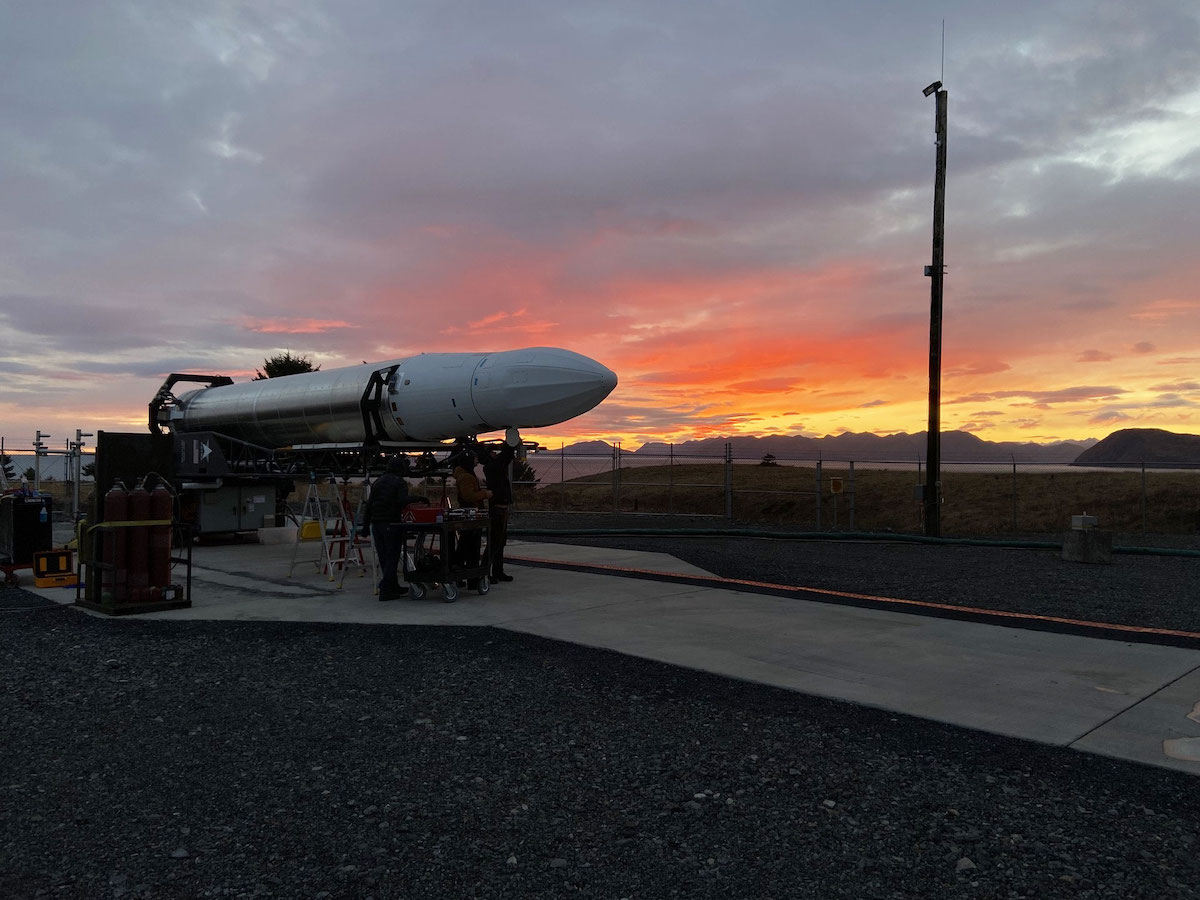
Astra, the small satellite launch company, said Wednesday it will try again to send a test payload into orbit from Alaska as soon as Nov. 8 after three previous flights missed the mark.
The company said in a tweet that teams at Pacific Spaceport Complex on Kodiak Island, Alaska, are preparing for a test-firing of the 43-foot-tall (13-meter) rocket’s main engines ahead of the first launch attempt.
The launch period opens Monday, Nov. 8, and runs through Nov. 14, Alaska time, with daily three-and-a-half hour windows beginning at 8 p.m. AKST. That launch time converts to 12 a.m. EST (0500 GMT) on Tuesday, Nov. 9, according to airspace warning notices.
Astra hoped to launch the privately-developed rocket, which it calls LV0007, in late October. But the company said range improvements at the Pacific Spaceport Complex, run by Alaska Aerospace Corp., were not finished in time to accommodate a launch last month.
The upcoming test flight will be Astra’s fourth rocket with the aim of placing a payload into a low-altitude polar orbit. Astra will launch a non-separating payload for the U.S. Space Force, which designates the mission STP-27AD2. The Space Force considers the launch a demonstration mission to evaluate Astra’s launch capabilities for future military satellites.
Astra’s first orbit-capable rocket, named Rocket 3.0, was supposed to launch in February 2020 in an effort sponsored by the U.S. military’s Defense Advanced Research Projects Agency to demonstrate responsive launch capability. But the mission did not get off the ground before DARPA’s deadline after a series of delays.
Astra intended to try again to launch Rocket 3.0, but the vehicle was destroyed in an accident during a wet dress rehearsal, or fueling test, at Kodiak.
Astra’s first orbital launch attempt Sept. 11, 2020, using Rocket 3.1, ended 30 seconds after takeoff when a guidance system problem caused the rocket to drift off course. In response, the rocket’s engines were commanded to shut down and the vehicle fell back to the spaceport on Kodiak Island.
On Dec. 15, Astra’s Rocket 3.2 nearly achieved enough speed to enter orbit. But the upper stage engine shut down just seconds before it was supposed to cut off, leaving the rocket just shy of orbital velocity. The vehicle re-entered the atmosphere, and most of it burned up.
Rocket 3.3, or LV0006, debuted several changes to Astra’s design when it launched Aug. 28.
It was around 5 feet taller than the rockets Astra used for its first two orbital launch attempts last year. With stretched first stage tanks to hold more propellant, and a lighter second stage, the new rocket configuration can carry heavier cargo into orbit, according to Astra.
Astra also implemented a closed-loop control system on LV0006 to fix a propellant mixture issue that caused the previous launch last December to fail before seconds before reaching orbit.
The Aug. 28 mission was cut short by the premature shutdown of one of the rocket’s five kerosene-fueled Delphin main engines. The loss of thrust caused the rocket to briefly falter just above the launch pad, then veer sideways before the four remaining engines slowly propelled the vehicle into the sky.
With four of its five engines operating, the rocket’s guidance, navigation, and control system corrected course and tried to compensate for the thrust shortfall. But the vehicle climbed slower than designed.
After the rocket reached supersonic speed, a range safety officer on the ground issued a flight termination command about two-and-a-half minutes into the flight.
Astra said last month that an investigation into the LV0006 failure found that kerosene and liquid oxygen propellants leaked, mixed, and ignited at liftoff, disabling one of the rocket’s engines.
“We designed the system to quickly disconnect and seal when the rocket lifts off,” wrote Benjamin Lyon, Astra’s executive vice president and chief engineer. “On this launch, propellants leaked from the system, mixed, and became trapped in an enclosed space beneath the interface between the rocket and the launcher. Those propellants were ignited by the engine exhaust, causing an over-pressure event that severed the connection to the electronics that control the fuel pump, shutting down the engine less than one second after liftoff.
“This is why the rocket hovered until it could take off with only four engines producing thrust,” Lyon wrote in a blog post on Astra’s website. “The vehicle then returned to a normal trajectory, passing through max-Q (maximum dynamic pressure). After that point, the four remaining engines did not have sufficient power to enable the vehicle to make orbit.”
Engineers reconfigured the design of the booster’s propellant supply system to ensure that the kerosene and liquid oxygen would not mix if another leak occurred. Astra also modified the propellant supply mechanism to reduce the risk of leaks, and improved “verification procedures” for design and operational processes.
“Data from the two-and-a-half minute flight provided valuable insights that we have incorporated into LV0007 and future launch vehicles,” said Chris Kemp, founder, chairman and CEO of Astra, in a statement. “Our team is looking forward to returning to flight and learning more about our launch system – consistent with our launch and learn philosophy.”
Astra’s rockets are designed to deploy small payloads, pursuing a launch market to deliver CubeSats, nanosatellites, and microsatellites into orbit.
Astra officials have said they eventually hope to launch daily, tapping demand from the U.S. military, commercial companies, and scientific institutions to rapidly deploy new space capabilities.
To do that, Astra wants to build rockets on an assembly line at its factory in Alameda, California, then ship the vehicles — along with required ground infrastructure — to distant launch sites in standard cargo trailers. A small team with less than a dozen engineers and technicians can set up the rocket and its mobile launch pad at an austere launch site in a few days.
Email the author.
Follow Stephen Clark on Twitter: @StephenClark1.
